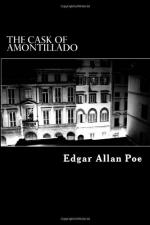|
This section contains 1,524 words (approx. 6 pages at 300 words per page) |

|
SOURCE: "Ironic Revenge in Poe's 'The Cask of Amontillado'," in Studies in Short Fiction, Vol. VI, No. 3, Spring, 1969, pp. 333-35.
In the following essay, Harris indicates how Masonic imagery coheres the tale's ironic effects.
"The Cask of Amontillado" has been less often read for itself than used to support theories about Poe's life, his psyche, or his narrative technique. It well illustrates his obsession with live burial and his use of sadism as a Gothic device,1 and it meets exactly the criteria of unity and economy set out in his review of Hawthorne's Twice-Told Tales. But such readings separate theme and form, emphasizing one at the other's expense, and neglect the irony of Montresor's trowel, that symbol of brotherhood and instrument of death. This irony gives coherence to the images of the tale and to many of Montresor's apparently gratuitous, sadistic sarcasms—and suggest a motive for murder...
|
This section contains 1,524 words (approx. 6 pages at 300 words per page) |

|


